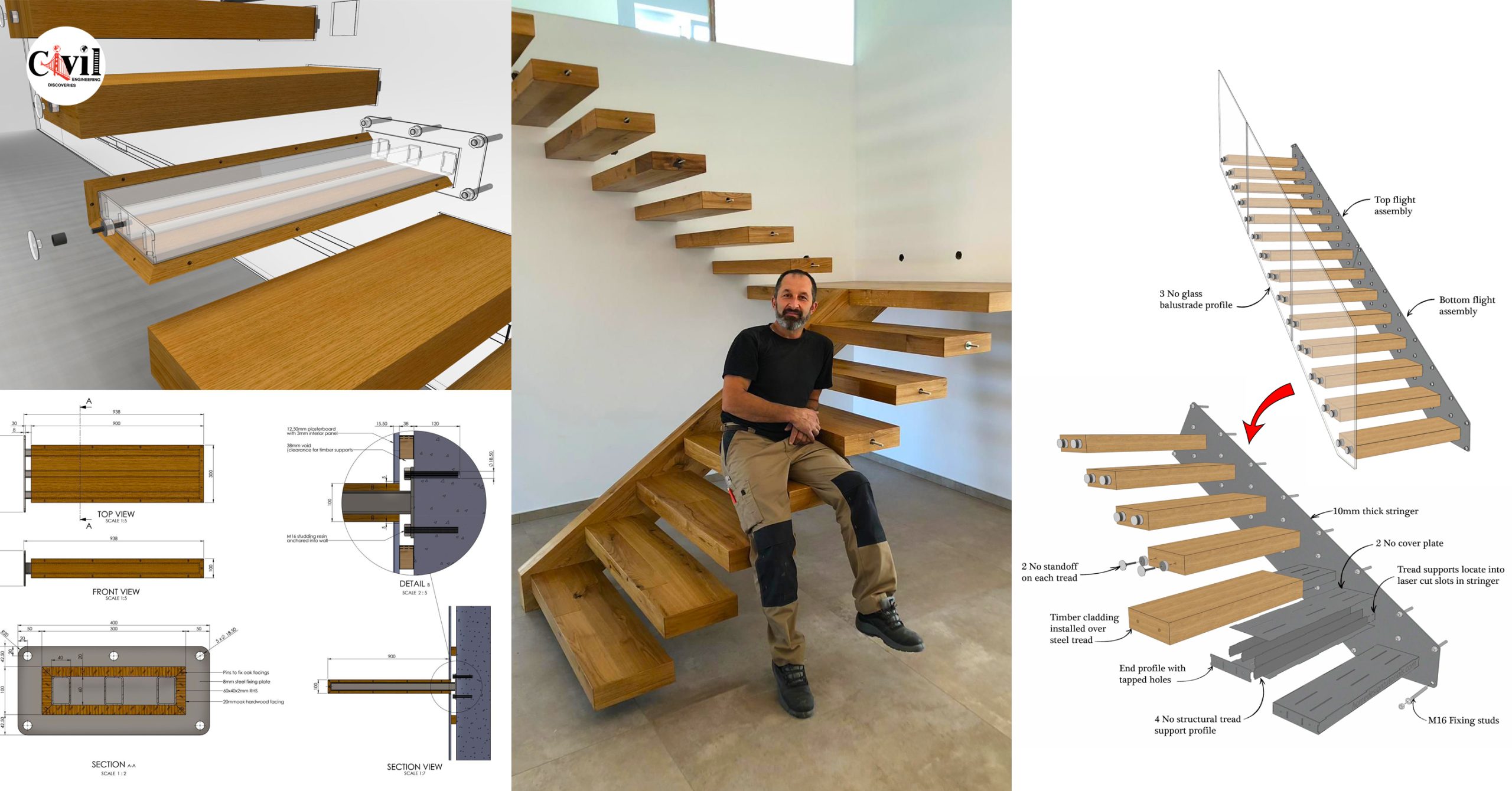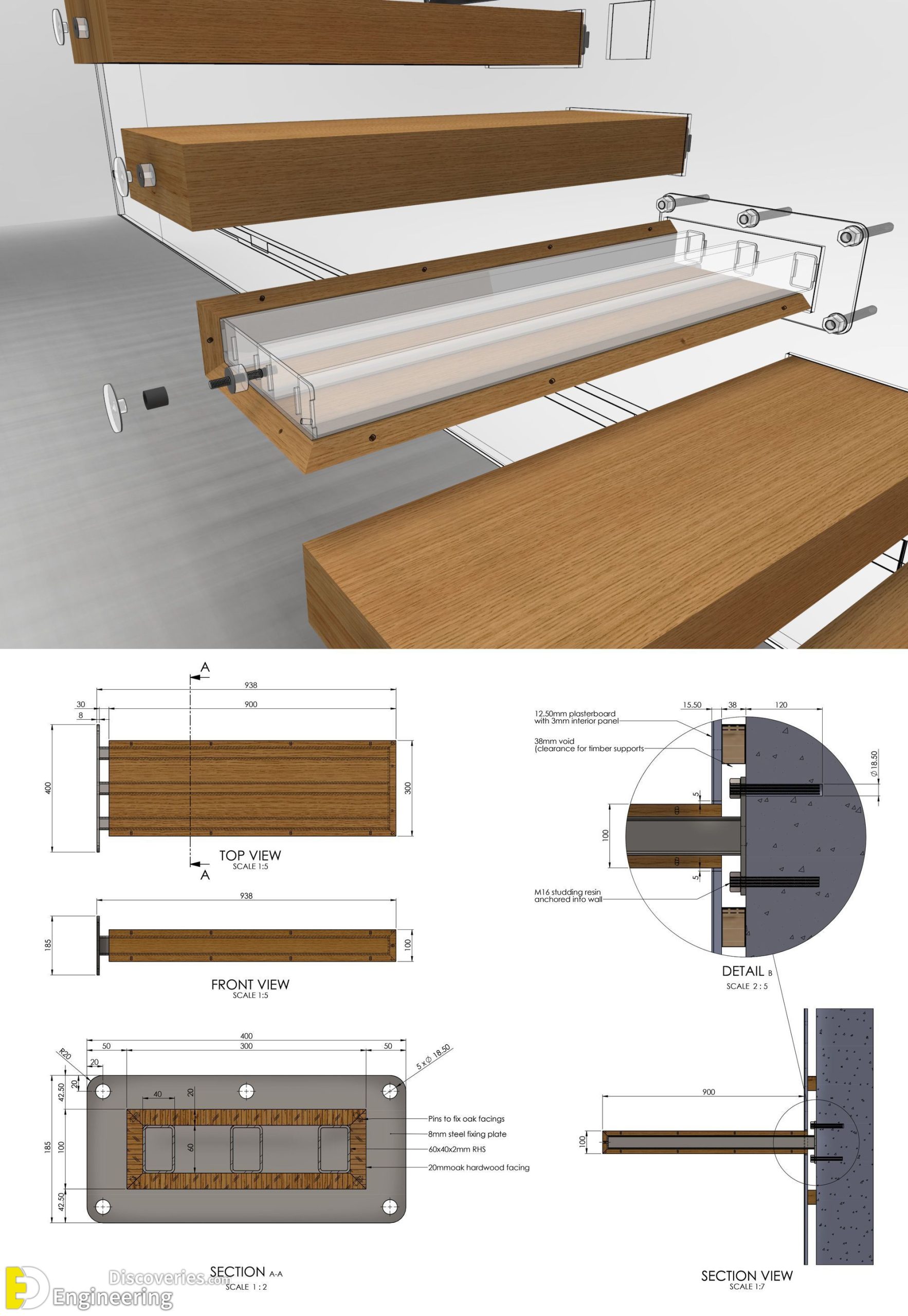Cantilevered stairs are a popular architectural choice that adds a touch of elegance and modernity to any space. These unique stairs are designed to appear as if they are floating, thanks to their minimalistic and structural design. In this article, we will delve into the details of implementing cantilevered stairs, exploring their benefits, design considerations, and the construction process.
Understanding Cantilevered Stairs
Cantilevered stairs, also known as floating stairs, are a type of staircase that appears to defy gravity. Unlike traditional staircases that rely on a central support system, cantilevered stairs are anchored only at one end, creating an illusion of floating steps. This design choice not only adds a sense of sophistication but also opens up space and allows light to flow more freely.
Benefits of Cantilevered Stairs
- Aesthetic Appeal: Cantilevered stairs offer a sleek and modern look, making them a popular choice for contemporary interior designs.
- Space Optimization: As cantilevered stairs require minimal support, they take up less space, creating an open and unobstructed environment.
- Enhanced Natural Light: These stairs allow light to pass through, promoting a well-lit and airy atmosphere.
- Versatility in Design: Cantilevered stairs can be customized to fit various architectural styles and preferences.
- Visual Impact: The floating effect of these stairs creates a striking visual impact, becoming a focal point in any space.
Design Considerations
When implementing cantilevered stairs, several design considerations must be taken into account to ensure both safety and aesthetics.
Structural Stability
Ensuring the structural stability of cantilevered stairs is crucial. It involves careful calculations and engineering expertise to determine the appropriate size and material strength to support the weight load.
Material Selection
Choosing the right materials is essential for both durability and visual appeal. Common options include wood, steel, glass, and concrete. Each material offers unique characteristics and can be combined to achieve the desired aesthetic effect.
Safety and Building Codes
Adhering to local building codes and safety regulations is of utmost importance. This includes determining the required dimensions for treads, risers, and handrails, as well as installing proper lighting and non-slip surfaces.
Construction Process
Implementing cantilevered stairs involves several steps. Let’s explore the construction process:
a. Planning and Measurement
Before starting the construction, thorough planning and precise measurements are necessary. This includes considering the available space, determining the desired angle and design, and taking accurate measurements for fabrication.
b. Foundation and Support
Creating a stable foundation is crucial for the structural integrity of the stairs. The supporting structure is typically concealed within the walls, requiring coordination with other construction professionals.
c. Installation of Treads and Risers
The treads and risers are carefully installed, ensuring a secure and level surface for each step. Precise measurements and attention to detail are essential during this stage to achieve a seamless and balanced appearance.
d. Finishing Touches
Once the stairs are installed, attention is given to the finishing touches. This may include sanding, varnishing, or painting the stairs to match the overall aesthetic of the space.
e. Maintenance and Care
To ensure the longevity and safety of cantilevered stairs, regular maintenance and care are necessary. This includes periodic inspections for any signs of wear or damage, cleaning the surfaces, and addressing any issues promptly.
Click Here To See The Mind-Blowing Stairs With Dreamy Skating Rink For Kids




















